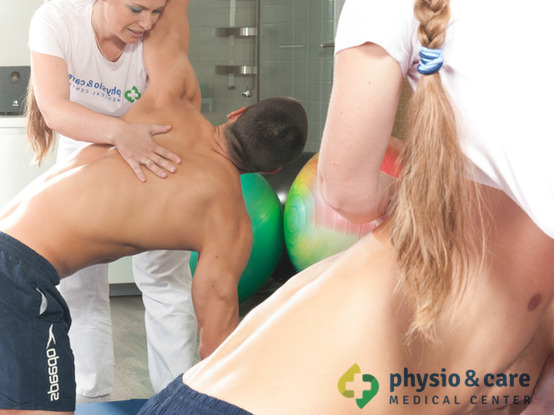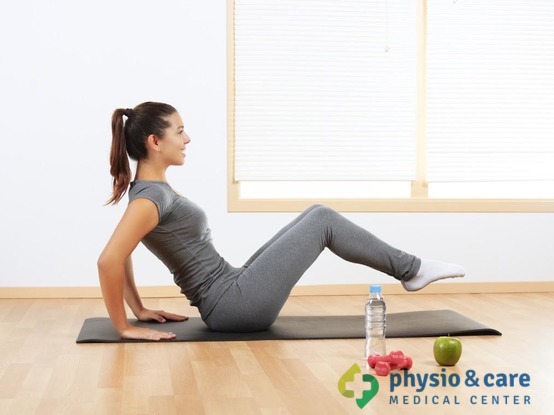Individual therapeutic exercises
We provide many types of exercise concepts under the guidance of experienced therapists that address specific physical problems of the patient. It is the most important part of comprehensive rehabilitation treatment.
We provide many types of exercise concepts under the guidance of experienced therapists that address specific physical problems of the patient. It is the most important part of comprehensive rehabilitation treatment.
Impaired stereotype of breathing causes a wide range of musculoskeletal system disorders and is the cause of repeated unsuccessful physiotherapy. The overall success of rehabilitation is directly dependent on proper breathing stereotype. In our center, we focus on teaching of proper breathing stereotype with regard to the individual needs of the client. Respiratory physiotherapy is a complex of breathing exercises that are performed in the natural rhythm of breathing.
The exercise is aimed at release of overburdened joints and spine, strengthening and relaxation of muscles of the pelvic floor, and the muscles which have tendency to weaken. The primary objective is to keep expectant mothers in good physical and mental condition during the period of pregnancy when the weight of expanding abdomen often causes poor posture, improper breathing, and subsequently increased back pain and muscle tension.
The body of a woman after childbirth has undergone great mental and physical changes, and therefore needs sufficient time for recovery. Our exercises are designed for women who want to get their bodies in shape after giving birth, to regain energy, to strengthen the body, but also to relax. The exercises are prepared individually for each client, depending on time after childbirth and state of health.
This is a set of exercises that activate muscle chains, ensure internal stability of deep axis system. The system belongs to the most modern methods applied in cases of improper body posture using proper breathing. It significantly contributes to strengthening of weakened parts of the musculoskeletal system and subsequent release of shortened structures.
The most effective method of preventing pain or subsequent removal of back pain is stabilization and mobilization of spine, also known by the acronym SM system.
The SM system consists of simple but effective exercises which are based on the activation of muscle spirals. Exercises help to balance the center line and activate the deep stabilizing system which is extremely important for a good posture. Straightening of the body increases the intervertebral discs, the spine is stretched, and blockages are gradually released and the muscle imbalances avoided.
Proper breathing, body position, but also strengthand speed of movement is very important during exercise.

Proper exercise helps to avoid degeneration of the spine and weight-bearing body joints. This exercise is also suitable as prevention in sedentary jobs, wrong postures consisting of faulty movement patterns, and asymmetrical loads in sport. It is enough to make the exercise just 15 minutes a day in order to activate the muscle spirals and to stimulate the weight-bearing support body structure.

This is a diagnostic and therapeutic approach, which relies on the basic physiological movement patterns. In the context of human development, these are progressively damaged or degenerated. DNS uses knowledge of the key principles of human motor behavior, which are the expression of control functions of the central nervous system (CNS). The therapist uses the musculoskeletal system as an information interface, which helps to diagnose the disorders and through these may affect the changes therapeutically.